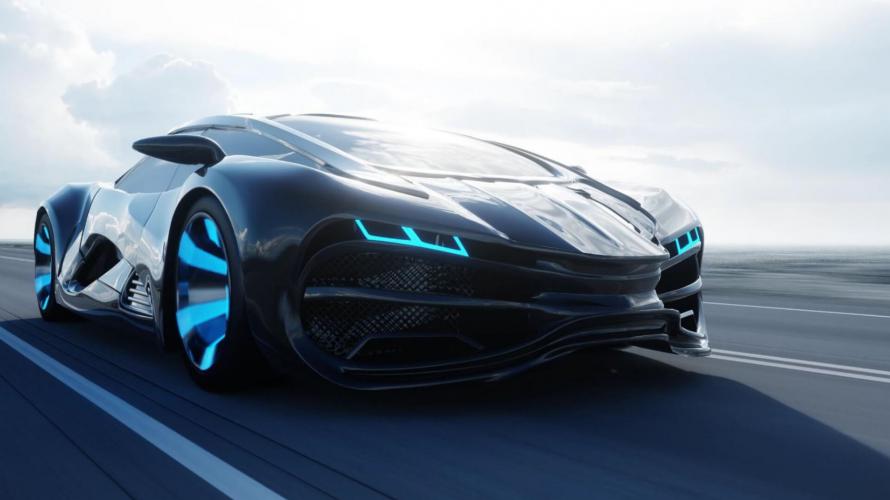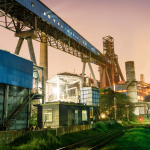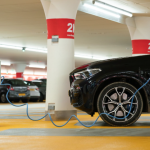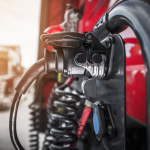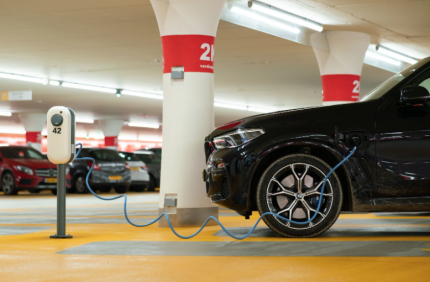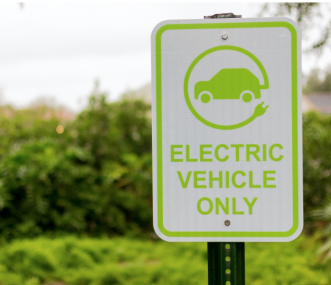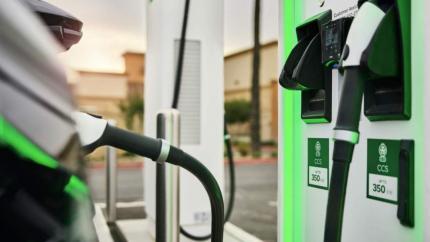NOTE: This is Part 2 of “The Cutting Edge of Clean Tech.” To read Part 1 about the newest innovations in internal technology like solid-state batteries and photovoltaic cells, click here.
It’s no secret that sustainable technology is developing quickly. Advancements in electric vehicle battery technology, hydrogen fuel cells and solar charging panels have made clean transportation options more accessible than ever.
But those are all internal advancements – technology within the vehicles themselves. What are some of the cutting-edge developments in the industry as a whole? Here’s a list of emerging technologies you can drive in or, in one case, drive on.
Electric Hypercars
How they work: Battery-electric vehicle (BEV) sports and luxury cars take top-of-the-line technology and combine it with a stylish exterior. These cars make use of more powerful motors and higher-capacity batteries than regular BEVs.
For example, the Porsche Taycan has a 300 kW motor compared to the Nissan Leaf’s 40 kW motor. This allows high-end sport BEVs to reach higher speeds and go further than their less-sporty counterparts. The obvious tradeoff for that performance is the large price tag associated with most models.
Current state of use: All-electric sports and luxury cars are currently available on the consumer market, including:
- The Aspark Owl, a supercar with 1,984 horsepower and a promised range of 280 miles, a top speed of 249 mph and a humble price tag of $3.2 million.
- The Lotus Evija, costing $2.8 million and boasting over 2,000 brake horsepower.
- On the slightly more affordable end are the Porsche Taycan ($80,000) and Audi RS e-tron GT ($100,000), which perform similarly to traditional sports cars.
Electric Long-Haul Fleets
How they work: Electric long-haul trucks run on similar technology to consumer BEVs. Lithium-ion batteries remain the standard for powering electric trucks, although those required to fuel these large vehicles must be bigger and more powerful than those used in smaller BEVs.
Because of the size of these batteries, they’re often placed in the storage area of the truck itself, taking up cargo space in return for the necessary travel range. Despite this, early-adopter fleets have experienced positive return-on-investment.
Current state of use: According to the 2021 State of Sustainable Fleets Report, satisfaction from early users is high and actual BEV orders by fleets are already three times their deliveries. As clean transportation technology continues to develop, fleets will no doubt adopt fueling options like hydrogen and natural gas as well, but the early success of BEVs has positioned the technology to become a leader in the long-haul sector.
Autonomous Vehicle Services
How they work: Autonomous cars make use of a combination of several technologies to “see” the world around them. Multiple cameras attached to the car allow it to sense road markers, while radar sensors track any object that might interfere with their path.
Additionally, most self-driving cars use light detection and ranging sensors to bounce lasers off of all nearby objects, creating a 3-D map of their surroundings – similar to how bats use echolocation.
Current state of use: The subject of self-driving vehicles has been discussed for years, with several companies introducing autonomous delivery vehicles and drones. But entire fleets of autonomous vehicles are still something on the cutting edge of development.
Mainly in private transportation, companies are slowly but surely introducing self-driving fleets into the real world.
Waymo, a sibling company of Google, currently operates a fleet of autonomous taxis in Phoenix, AZ, but their latest tech is a series of autonomous BEVs made in partnership with Jaguar.
Halo, another taxi operator, recently partnered with T-Mobile to create a test fleet of electric vehicles that can be delivered driverless to customers to then be used as a regular vehicle. Much like the popular scooters from Bird or Lime, these cars can be ordered, used for however long the customer wants, then dropped off for use by another.
Electric (and Autonomous) Nautical Technology
How they work: Electric boats use technology largely similar to current BEVs. Batteries within the boat are charged by an electric charger, then that charge is supplied to a motor that is able to convert electrical energy into mechanical energy.
Current state of use: You can buy an electric vessel today, with limited-range solar passenger craft and small electric boats readily available. Several electric yachts are also currently on the market, but with maximum ranges of only around 40-60 miles and average speeds around 20 knots, the realization of large electric ships remains distant.
The first electric cargo ship, the Yara Birkeland, is set to make its maiden voyage from Norway along the Scandinavian coast later this year. Not only is the Yara Birkeland fully-electric, it’s also autonomous – prepared for entirely unmanned ventures. But even with on-board batteries equivalent to the capacity of around 100 Tesla Model 3s, it will only be able to make short, local trips.
For long nautical journeys, better, more efficient batteries or additional clean fueling options need to be developed.
Induction Roadways
How they work: Instead of relying on a direct connection to provide charge to BEVs, induction roadways charge cars just by driving on them. Based on the principle of electromagnetic induction, an electric current is sent through a copper coil placed beneath the road, generating a magnetic field. When that field is received by a car-mounted device with a coil of its own, it’s transformed into an electric current that the car can use to recharge its batteries.
Current state of use: As of now, there are few induction roads in existence. Israeli tech company ElectReon has tested one in Gotland, Sweden and another in Tel Aviv, Israel. While these trials saw promising results, they were limited in scope and current charging capability.
It’s safe to say it will be some time before the roads we drive on to commute and run errands have a shot at becoming induction-equipped.
